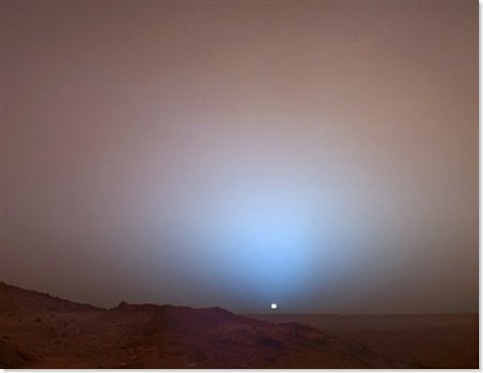A discovery of silica deposits on Mars detected in 2007 is featured in a paper in the May 23, 2008 issue of Science. The Mars rover Spirit detected these deposits which were formed by volcanic vapors or hot-spring-type events that could hold traces of past life. 
The above image, taken in 2005, shows the sun setting above the Martian horizon casting a blue glow above the rim of Gusev Crater.
On Earth, these deposits are associated with living organisms and fossil remains of microbes. This means that the environment in this part of Mars could be friendly to microbial life. Silica is a medium that can capture and preserve traces of this microbial life.
The Spirit and Opportunity rovers have been operating on Mars since January 2004. On Sunday, May 25, a new Mars lander named Phoenix will arrive to take ice samples out of the Martian soil for analysis.




